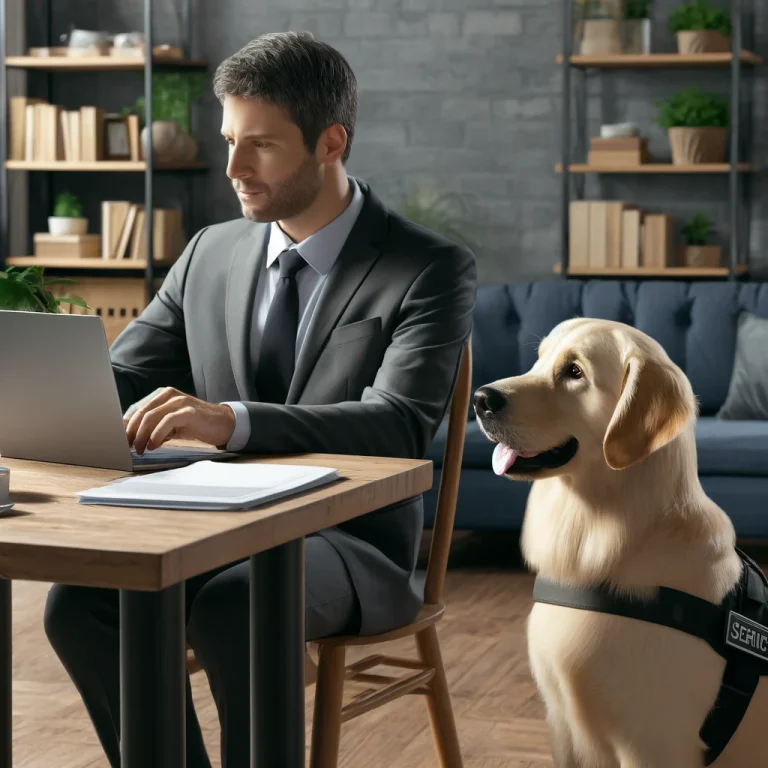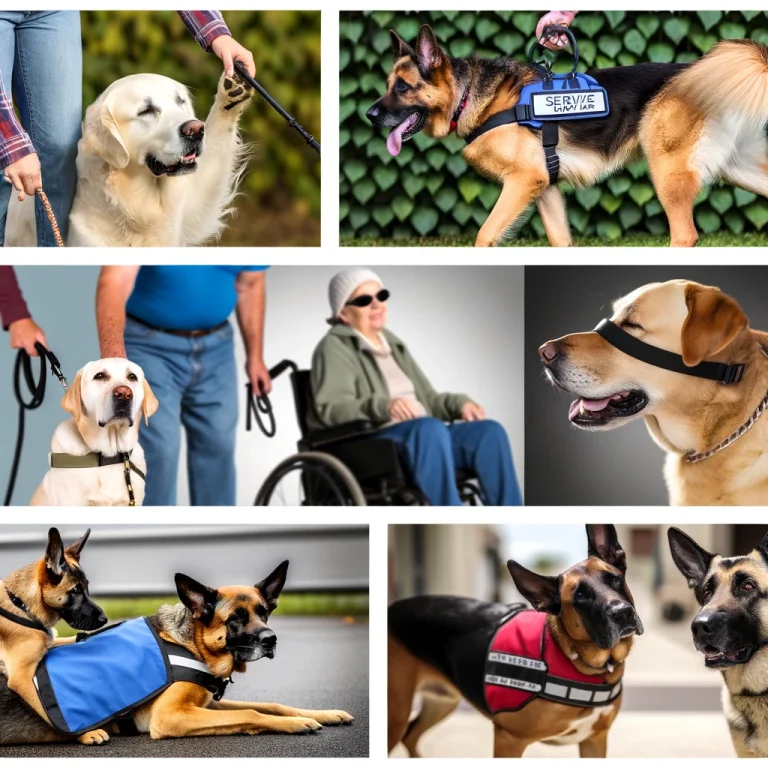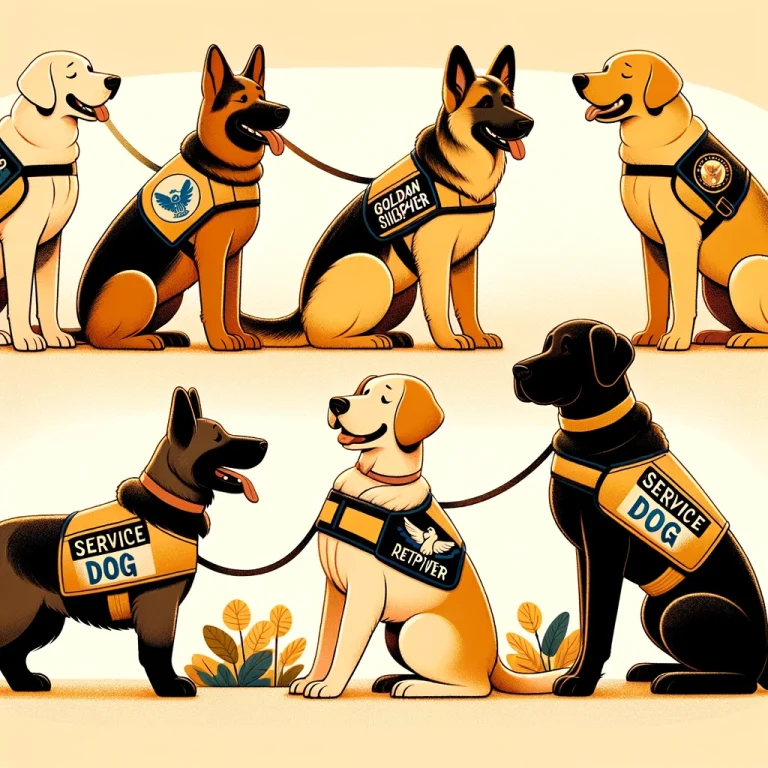Introduction
Service dogs are more than just loyal companions. They provide life-changing support to people with disabilities, offering assistance in ways that transform lives. At ServicePupSolutions.com, we believe in the incredible power of these animals and their ability to enhance the quality of life for their handlers. From providing service dog benefits to highlighting the importance of pet insurance and service dog products, we aim to educate and inspire our readers. This blog will explore the profound impact of service dogs, the various ways they assist their handlers, and the steps to acquiring and maintaining a service dog.
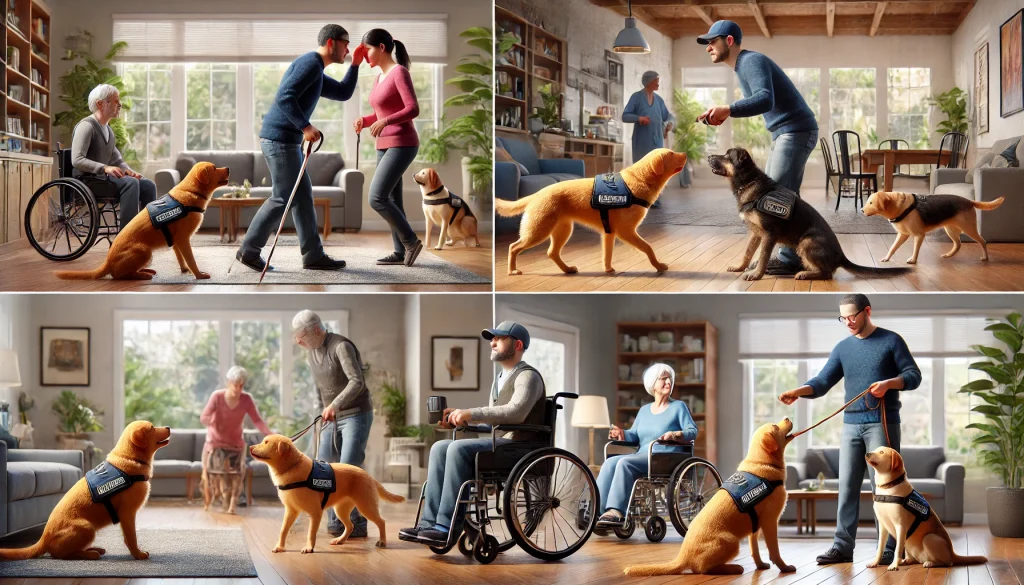
The Role of Service Dogs
Service dogs are specially trained to perform tasks that help individuals with disabilities. These tasks can range from guiding the visually impaired to alerting individuals with hearing loss. The primary goal is to increase independence and improve daily functioning. Assistance animals are not only helpers but also crucial partners in the lives of many.
Task-Specific Assistance
Service dogs are not pets; they are working animals trained to perform specific tasks for their handlers. The tasks they perform are directly related to the handler’s disability and are designed to mitigate the challenges that the disability presents. For instance, a service dog might be trained to fetch medication, alert to an impending seizure, or guide a visually impaired person through a crowded area. These tasks are not just about convenience but are often essential for the handler’s safety and well-being.
Service Dog Benefits
Physical Assistance
For those with mobility impairments, service dogs can fetch items, open doors, and even help with balance. This physical assistance reduces the need for human support, allowing individuals to navigate their environments with greater ease. Service dogs can also assist with tasks such as turning lights on and off, retrieving dropped items, and even helping their handlers dress and undress. This level of assistance can be life-changing, offering a level of independence that might otherwise be unattainable.
Emotional Support
Service dogs also provide significant emotional support. They help reduce anxiety and depression, offering comfort and companionship. This emotional bond can be particularly beneficial for individuals with mental health conditions, providing a sense of stability and security. Service dogs can be trained to recognize signs of anxiety or panic attacks and respond in ways that help calm their handler. This can include nudging, licking, or leaning against the handler to provide a physical reminder that they are not alone.
Medical Alerts
One of the most remarkable service dog benefits is their ability to detect medical conditions. Dogs can be trained to alert their handlers to seizures, low blood sugar levels, and other medical emergencies. This early warning system can be life-saving and offers peace of mind to both the handler and their loved ones. For example, a diabetic alert dog can detect changes in their handler’s blood sugar levels through scent and alert them before they experience symptoms. This allows the handler to take action to prevent a medical emergency.
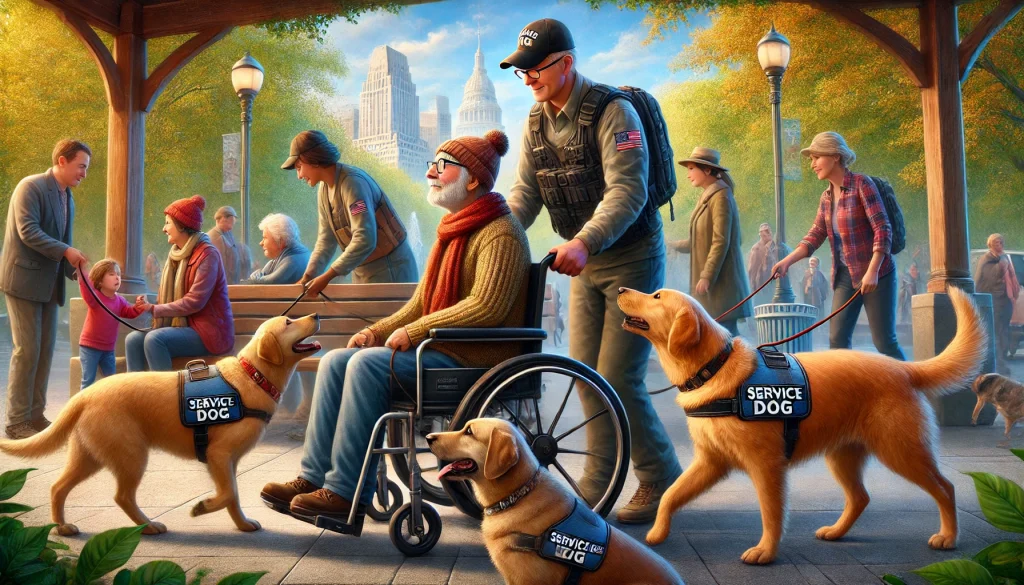
Life-Changing Support
Increased Independence
Service dogs enable individuals to live more independently. By performing tasks that their handlers cannot, these dogs reduce reliance on others. This independence fosters self-confidence and a greater sense of autonomy. For someone who has always relied on others for assistance, having a service dog can be a profound shift. It allows them to engage in activities they might have avoided previously and take control of their daily lives.
Improved Quality of Life
The presence of a service dog can lead to a marked improvement in quality of life. Handlers report feeling more secure, less isolated, and more engaged in social activities. This life-changing support enhances overall well-being and promotes a more active lifestyle. Service dogs can also help reduce the symptoms of PTSD, anxiety, and depression. Their constant companionship provides a sense of stability and predictability, which can be incredibly comforting.
Social Interaction
Service dogs often act as social bridges, helping their handlers connect with others. They can reduce the stigma associated with disabilities, as people are generally more comfortable approaching and interacting with someone accompanied by a dog. This increased social interaction can lead to the development of new friendships and support networks. For many handlers, their service dog helps them feel more connected to their communities and less isolated.

Assistance Animals and Their Training
Training a service dog requires time, patience, and expertise. Professional trainers use positive reinforcement techniques to teach dogs the specific tasks they need to perform. However, self-training options are also available through ServiceDogOwners.com, providing resources for those who prefer to train their dogs independently.
Professional Training
The training process typically begins with basic obedience training, where the dog learns essential commands such as sit, stay, and come. Once the dog has mastered these commands, the training progresses to more specialized tasks tailored to the handler’s needs. This can include anything from fetching specific items to recognizing medical emergencies.
Self-Training
Self-training can be a cost-effective option for those who cannot afford professional training services. It also allows for a more personalized training experience, as the handler and the dog work closely together to develop the necessary skills. ServiceDogOwners.com offers a range of resources, including training guides, instructional videos, and support forums to assist with the self-training process.
The Importance of Pet Insurance
Investing in pet insurance is crucial for service dog owners. It ensures that your assistance animal receives the best possible care without financial strain. Pet insurance can cover routine check-ups, emergency care, and even specialized treatments. Protecting your service dog’s health is vital, as their well-being directly impacts their ability to provide support.
Financial Protection
Unexpected veterinary expenses can be a significant financial burden. Pet insurance helps mitigate these costs, ensuring that your service dog remains healthy and able to perform their duties. It also provides peace of mind, knowing that you can afford the necessary care if your service dog falls ill or is injured.
Service Dog Products
To maximize the effectiveness of service dogs, it’s important to use the right products. These can include:
Service Dog Vests
Service dog vests clearly identify your dog as a working animal and often come with pockets for carrying essential items. These vests can also help the public understand that your dog is not just a pet, but a trained working animal.
Leashes and Harnesses
Leashes and harnesses designed for both comfort and control make it easier for the handler to guide the dog. A good harness can also help with balance and stability for the handler.
Training Tools
Training tools help maintain the skills and behaviors necessary for effective assistance. This can include items such as clickers, treat pouches, and training collars.
How to Acquire a Service Dog
Obtaining a service dog involves several steps, including:
Assessment
Determining the specific needs of the individual and the tasks the dog must perform. This initial assessment helps match the right dog with the right handler.
Training
Professional training or self-training to ensure the dog can perform the required tasks reliably. This phase can take several months to complete, depending on the complexity of the tasks.
Certification
While not required, certification can provide additional credibility and recognition. Certification can also help when it comes to public access rights and accommodation requests.
Real Stories of Transformation
Sarah’s Journey
Sarah, who has epilepsy, shares her story of how her service dog, Max, transformed her life. Max’s ability to detect seizures before they happen has given Sarah the confidence to live independently. “Max is more than just a dog; he’s my lifeline,” Sarah says. Before Max, Sarah lived in constant fear of having a seizure in public. Now, she feels more secure and capable of managing her condition.
Mike’s Experience
Mike, a veteran with PTSD, found solace in his service dog, Buddy. Buddy’s constant presence and calming influence have helped Mike manage his symptoms and engage more fully with his family and community. “Buddy has brought me back to life,” Mike explains. Before Buddy, Mike struggled with severe anxiety and depression. With Buddy by his side, he has been able to reclaim his life and participate in activities he once avoided.
The Future of Service Dogs
The field of service dog training is continually evolving, with new techniques and technologies enhancing the capabilities of these amazing animals. As research progresses, we can expect even more sophisticated training methods and a broader range of tasks that service dogs can perform. Innovations in genetics, behavior analysis, and technology will likely lead to more efficient and effective training programs, expanding the range of disabilities that service dogs can assist with.
Conclusion
Service dogs are truly more than just companions. They offer life-changing support, enhancing the lives of their handlers in countless ways. From providing physical assistance and emotional support to alerting to medical conditions, these assistance animals are indispensable partners. At ServicePupSolutions.com, we are committed to educating and supporting those who benefit from service dogs, ensuring they have access to the best resources, training, and products.
By understanding the full scope of service dog benefits, investing in pet insurance, and utilizing the right service dog products, you can ensure that your service dog remains healthy and effective in their role. Whether you’re considering professional training or exploring self-training options through ServiceDogOwners.com, the journey to a life transformed by a service dog is one filled with hope and possibility.
Searching for a way to boost your income while keeping your service dog by your side? Learn how to launch a Side Hustle or new career and increase your earnings alongside your loyal companion. Click Here to find out more and start your journey today!



